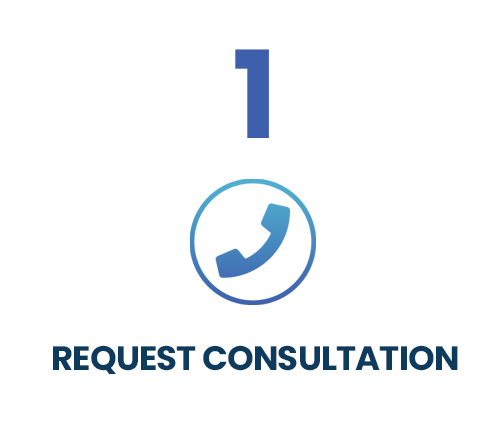Your favorite color says a lot about you. Colors are an effective tool for translating your thoughts, feelings, ideas, and interests into a visual format. Our relationship with color stretches back to the dawn of time (long before branding), when we started to develop stronger biological tools to recognize colors visually. This ability enhanced our ability to spot things like brightly colored foods and blood, which greatly increased our ancestors’ chances of survival.
And the rest is history. The ability to recognize colors helped our ancestors grow and prosper for millions of years. Eventually, our frontal cortex developed advanced cognitive functions and Neanderthals were replaced by the comparably more advanced Homo sapiens. Fast forward to the 15th century and artists like Leonardo da Vinci and Michelangelo began to utilize colors to push the boundaries of art. Thus, an important component of our survival became irreversibly ingrained in our culture.
Although this summary is oversimplified, it does highlight our close kinship with color. Human beings don’t just process color, they communicate with it and experience it. As a result, the colors you chose to represent your brand are vital to spreading your message the way you intended. Iconic American brands like McDonald’s, Walmart, and Publix deftly utilize color to express their values, represent their services, and attract clients. What do your company’s colors say about your brand?
Red
The color red is dynamic, attention-grabbing, and exciting. As one of the three primary colors, people tend to have a strong connection with the color red. Scientifically, the color red enhances our appetite, which is why successful fast food chains like McDonald’s, Wendy’s, Chick-fil-A, and Arby’s have stuck with red for the better part of the modern era.
The color red will help your brand get noticed because people’s relationship with this color is deeply rooted in society. For example, our daily interactions with stop lights strengthens our perception of the color red because we perceive red as meaning “stop.” This can be useful for retailers who want passersby to “stop” and take a look at their products or services. In fact, red has been scientifically proven to stimulate blood pressure and raise the heart rate to evoke feelings of passion, excitement, and even love.
Blue
When your brand wants to demonstrate intelligence, trustworthiness, and liberalism, there’s no better color than blue. Although once thought to be a color representing masculinity, the color blue has grown increasingly inclusive over the years. Brands in the technology and social networking sectors, like Facebook, Intel, Twitter, Skype, and Hewlett Packard, are especially keen on blue.
What is the first thing that comes to mind when you think of the color blue? Your answer is likely one of two things: the sky or water. So it makes sense when you consider the fact that blue is a color that boosts our feelings of tranquility and reliability. The color blue also communicates safety and security. If you want to enhance your target audience’s trust in your brand, try incorporating more blue into your branding.
Green
You know what it means to “go green,” and many of these sentiments translate into how green is perceived in advertising. The color green has strong ties to the environment, peace, and health, but it is also irrevocably tied to money. Considering this alarming distinction, brands must carefully plan their application of this powerful color. Ironically, figuring out the balance between these contrary perceptions helps illustrate another feeling that green simulates — harmony, stability, and equilibrium.
Grocery stores like Whole Foods and Publix use green to enhance our perception of how fresh their meats and produce are. On the other hand, banks like Regions, TD Bank, and Citizens Bank utilize green to represent their skill and efficiency when handling money. When we work with businesses to revitalize their brand or perform an all-out rebranding, we are cognizant of how a color like green, which can be utilized in a number of ways, can affect the way your brand’s message is conveyed to your target audience.
Purple
Throughout history, the rarity of the purple hue has made it a hallmark of royalty, and the wisdom and respect that is associated with kings and queen. Today, purple is as common as any other color, but it still leaves a strong impression on the viewer, whether intended to glamorize a brand or promote creative thinking. Purple is frequently utilized in the branding of beauty and anti-aging products, too.
We often find that brands that choose the color purple plan to utilize creative advertising strategies that incorporate youthfulness and humor into their branding. Yahoo, T-Mobile, and Taco Bell are three examples of companies that utilize purple (T-Mobile uses an aggressive shade of fuschia) in their branding and have executed advertising campaigns that focused primarily on grabbing their target audience’s attention with quirkiness.
Orange
Orange is a welcoming, friendly color that promotes a cheerful disposition and inspires confidence, but it is also synonymous with caution. This color can be utilized to draw in apprehensive shoppers and indicate sales and clearances. Like the color green, orange has been utilized to help represent brands across an array of industries.
Harley Davidson and Nickelodeon both prescribe to the color orange, but they accomplish vastly different goals by doing so. Nickelodeon wants to appeal to children, so orange, often considered one of the friendliest colors, is a perfect selection. Conversely, Harley Davidson wants to inspire confidence and ensure their target audience that there is no better product on the market.
Yellow
The color yellow shares a close kinship with the color orange. Similar to orange, yellow is associated with warmth, optimism, and conversely, caution. Yellow also has the unfortunate distinction of being the color that is most likely to trigger crying in babies, so if you plan on investing in a Gymboree franchise, stay clear of this color (and go with orange).
However, optimism seems to be the central thread linking brands that utilize the color yellow. Consider these brands that all opted for yellow when choosing their color palette from the unlimited spectrum of colors: Subway, Best Buy, Nikon, Sprint, and National Geographic. What do these brands have in common? Very little. Nevertheless, they are all brands that provide important services that help you unlock your creativity or become the best version of yourself.
Gray
Gray is a calming color that is often used to symbolize feelings of functionalism, old age, and solidarity. You will know if your brand benefits from this color almost immediately. Currently, there are very few brands using gray as the primary color in their branding, and the brands that are using it, like Apple, Nissan, Lexus, and Swarovski, are really opting for a silver tone which can be perceived very differently from gray.
Be careful when you use gray. Too much gray tends to make people feel apathetic and depressed. Our innate association of the color gray with fog means your brand can easily get lost in a haze of gray if you don’t consult a talented digital marketing agency like Leverage Digital.
Black and White
While the color black is incorporated into nearly every brand in some form or another (balancing light and dark is an integral component of nearly every design plan), we rarely characterize a brand as using black to represent their goals and initiatives. Black is commonly associated with authority, power, and stability. It’s a no-nonsense color that can effectively communicate your ardent dedication to your work and depthless wisdom, just don’t use too much of it. Applying too much black to your brand’s color palette can transform your brand from “Gap” to “Hot Topic” in a matter of seconds.
On the contrary, if you want your brand to feel sterile, pure, and safe, you should consider using white. Sure, the color white can be bland and boring, but it can also be classy, tasteful, and neutral. Sometimes, utilizing extra white space can help you say more by giving the viewer space to populate your brand with their own ideas. Furthermore, the color white can be an effective color in your rebranding efforts, as we perceive the color white as being unaltered and true.
Avoid Favoritism When Selecting Colors
Your favorite color means a lot to you, but your experience with a color is unique to your own perceptions and feelings. Choosing colors based solely on favoritism can lead to a poorly executed creative design that confuses your target audience. To illustrate this, imagine if the CEO of Fifth Third Bank decided to use their “favorite” colors — gold, purple, and black— when developing their brand. Here’s the result:
Would you trust this bank with keeping your money secure? If Fifth Third Bank was an ironically named night club, you might be interested in seeing what’s beyond their purple and gold doors. Unfortunately, color favoritism can lead to ineffective branding, an unclear message, and a lack of customers. Fifth Third Bank’s normal color palette, which utilizes blue, green, and white, is a significant upgrade from this ill-conceived concept:
In this rendition, each color has a purpose. The use of blue inspires confidence in the customer, who will perceive this brand as a seasoned institution for banking, and the green convinces the customer that the bank will handle their money wisely. Here are a few more examples of how pairing your brand with the wrong color palette can instantly throw off your target audience:
[metaslider id=”6475″]
Conclusion
Your company’s colors help tell the story of your brand. When people are first introduced to your branding, they will immediately form a mental connection between your company’s name and color palette. This connection can last a lifetime. Are you making a first impression that instantly converts curiosity into a customer? At Leverage Digital, our creatives are dedicated to strengthening your brand’s identity and increasing your visibility amongst the competition. Whether you’re a new business just entering the fray, or an established business looking for a rebrand, we’re here to help you meet all of your branding objectives.
Do you feel like your brand is being lost among your competitors? Failing to stand out could be the reason your brand is struggling to move forward and expand. Perhaps it’s time to rework your image. At Leverage Digital, our gifted team of creatives and marketers work hand-in-hand to ensure your brand is firing on all cylinders.







